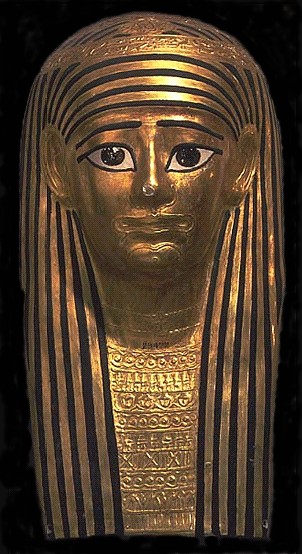|

|
MUMMY
MASK
Cartonnage, painted and gilded
Late Ptolemaic Period or early Roman
Period
|
|
|
A very important part
of the outer trappings of a mummy was a mask, placed over the head
to provide an idealized image of the deceased as a resurrected being.
These masks were frequently fashioned from cartonnage, a cheap and
lightweight material made from layers of linen stiffened with glue
and plaster. The mask played a crucial symbolic role, for it signified
the elevation of the dead person to a higher plane of existence
in the afterlife. He or she was believed to attain a status of equality
with the gods, and this association was conveyed in particular through
the symbolic use of color and precious materials. This mask exemplifies
all the classic features of such funerary trappings. The face, collar
and wig are extensively covered with gold leaf, and the wide-open
eyes convey a sense of vitality and alertness appropriate to one
who has entered upon a new life. It is, however, a purely idealized
image and is in no sense a true likeness of the deceased. |
|
NEXT IMAGE
| Slide Show Index

All images reproduced by permission
of the Trustees of the British Museum. Informational text provided by
the British Museum.
The History Place Terms
of Use: Private home/school non-commercial, non-Internet re-usage only
is allowed of any text, graphics, photos, audio clips, other electronic
files or materials from The History Place™
|
|

